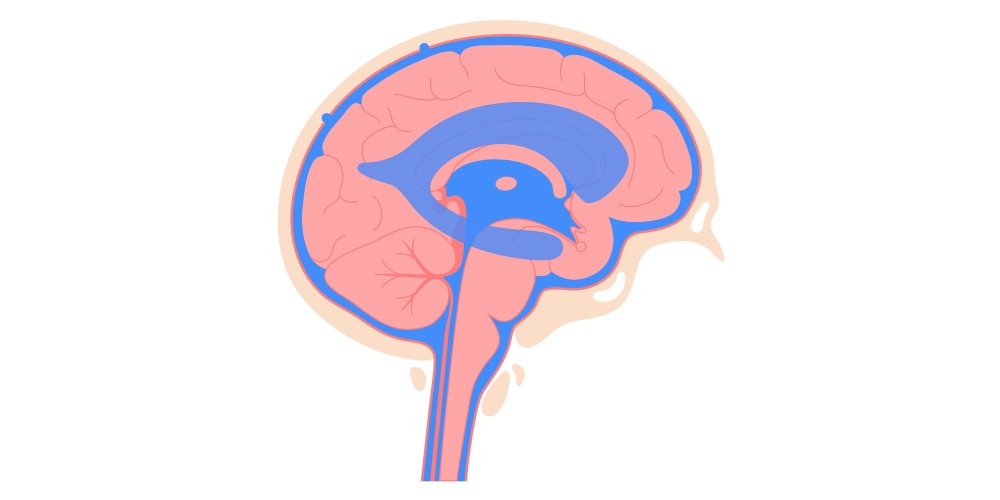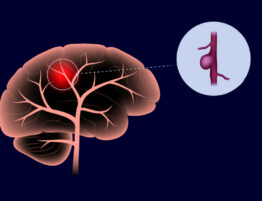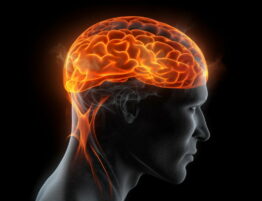It’s a condition characterized by an abnormal accumulation of cerebrospinal fluid in the cerebral organ. It leads to increased tension in tissues. This can subsequently cause complications in everyday life. That is why it is important to understand the main signs and consider fast determination of this disease.
This article will delve into:
- What hydrocephalus is.
- Its signs.
- Evaluation.
- Healing options.
- Frequently asked questions surrounding this condition.
Stay with us. Read the article to the end to get all the valuable information for your health.
What is Hydrocephalus?
It’s often referred to as “water on the brain”. It occurs in case of an imbalance between the production and absorption of CSF. It’s a clear fluid that surrounds the cerebral organ and spinal cord. It provides cushioning and nutrients while removing waste products.
Under normal circumstances, it flows through cavities called ventricles. And it is eventually absorbed into the bloodstream. However, in this ailment, this fluid accumulates in the brain. It causes the ventricles to enlarge and exert tension on the cerebral organ. It potentially leads to damage if left uncured.
There are two types of the ailment. It can be congenital. It means it is present at birth. Or it can be acquired. It means it develops later in life due to trauma, infection, or other medical conditions. Congenital type often results from abnormalities in fetal cerebral organ development. They’re neural tube defects or genetic predispositions.
Diagnosis of Hydrocephalus
It requires a comprehensive evaluation by healthcare professionals. It involves a combination of a medical history review, physical examination, and various tests. Prompt assessment is crucial for effective management and prevention of complications. Here’s an overview of the methods used.
Clinical Assessment
A thorough medical history and physical examination are essential. It’s for determination in adults. Headache, cognitive impairment, gait disturbances, urinary incontinence, and visual changes may raise suspicion.
Neurological Examination
It includes tests of cranial nerve function, motor strength, sensation, coordination, and reflexes. They help evaluate the extent and impact of the ailment on cerebral organ function.
Imaging Studies
For diagnosis of hydrocephalus, the next tests can help:
- MRI (Magnetic Resonance Imaging). MRI is the imaging modality of choice for determination. It provides a detailed visualization of the cerebral organ structures. It includes the ventricles. It allows the identification of ventricular enlargement and associated abnormalities.
- CT (Computed Tomography) Scan. Doctors use CT scans when MRI is contraindicated or unavailable. It’s not as sensitive as MRI for subtle changes. However, CT scans can still detect ventricular enlargement and assess the degree of cerebral organ atrophy.
Intracranial Pressure Monitoring
In cases where there is uncertainty regarding the determination or to assess the severity of intracranial hypertension, direct measurement of intracranial pressure (ICP) may be warranted. The diagnosis of hydrocephalus involves placing a catheter or sensor within the cerebral organ’s ventricles. It’s to monitor tension levels over time.
CSF Analysis
Lumbar puncture (spinal tap) analyzes CSF composition and tension. Elevated CSF tension and abnormalities in protein or cell count may support the determination.
Neuropsychological Evaluation
Assessing cognitive function, memory, and other neuropsychological domains provides valuable insights into the impact of ailment on daily functioning and quality of life.
Genetic Testing
There can be suspected congenital or hereditary forms of the ailment. Genetic testing may be usually recommended. It’s to identify underlying genetic mutations or syndromes contributing to the condition.
Monitoring Response to Treatment
Serial imaging studies and clinical assessments are essential. It’s for monitoring the response to curing.
Hydrocephalus Symptoms
The signs of the ailment can vary. It depends on factors such as age, underlying cause, and the rate of fluid accumulation. Signs may include the following.
Headaches
Persistent headaches are a hallmark sign of the ailment in adults. These headaches may intensify with changes in position, such as bending over or lying down. It’s due to increased intracranial tension.
Cognitive Impairment
Adults may experience cognitive changes. It includes difficulties with concentration, memory loss, slowed thinking, and impaired judgment. These cognitive impairments can significantly impact daily functioning and quality of life.
Gait Disturbances
Another hydrocephalus symptom affects motor function. It leads to gait disturbances. Those are unsteady walking, imbalance, and difficulty coordinating movements. Some people may experience a shuffling gait or exhibit changes in posture.
Urinary Incontinence
Bladder dysfunction is common in adults. It may manifest as urinary urgency, frequency, or incontinence. These signs can result from disruption of neural pathways controlling bladder function. It’s due to increased intracranial tension.
Visual Changes
The ailment can exert tension on the optic nerves and visual pathways. It leads to visual disturbances. They’re blurred vision, double vision (diplopia), tunnel vision, or difficulty focusing. Papilledema may also be present in some cases.
Nausea and Vomiting
Increased intracranial tension can stimulate the vomiting center in the brainstem. It results in episodes of nausea and vomiting. These hydrocephalus symptoms are particularly in the morning or after changes in position.
Sleep Disturbances
Adults may experience disrupted sleep patterns. It includes insomnia or excessive daytime sleepiness. Sleep disturbances may exacerbate other signs. And it contributes to overall fatigue and impaired functioning.
Seizures
In some cases, the ailment can predispose adults to seizures. It may present as focal or generalized episodes of altered consciousness, involuntary movements, or sensory disturbances.
Decreased Mobility
The progressive type can cause weakness or paralysis in the extremities. It makes it difficult for adults to perform daily activities independently.
How to Treat Hydrocephalus?
Treatment typically involves surgical intervention. It’s aimed at alleviating signs and preventing further neurological damage. The primary methods used to cure the ailment include:
- Shunt Placement. The most common treatment involves the surgical placement of a shunt. This system consists of a flexible tube (shunt) with a one-way valve. It diverts excess CSF from the ventricles to another part of the body. They’re the abdominal cavity or heart, where it can be absorbed. Shunt placement helps maintain normal intracranial tension. And it prevents the accumulation of CSF. It relieves signs associated with the ailment.
- Endoscopic Third Ventriculostomy (ETV). In select cases, an alternative surgical procedure known as ETV may help. When treating hydrocephalus, a neuro endoscope is also used. It’s to create a new passage within the ventricular system. It allows CSF to bypass the obstruction and flow freely.
These surgical interventions aim to restore normal CSF circulation and relieve signs. It enables affected individuals to lead more functional and comfortable lives. Regular follow-up care and monitoring are essential. It’s to assess curing efficacy, manage complications, and optimize long-term outcomes.
Conclusion
Hydrocephalus is a complex neurological condition. It’s characterized by an abnormal accumulation of fluid in the brain. Prompt determination and appropriate curing are essential. It’s for managing signs, preventing complications, and improving overall quality of life. Through a combination of medical history review, physical examination, and tests, healthcare providers can accurately determine the ailment and develop personalized plans tailored to each patient’s needs. With medical technology and surgical techniques, many people can lead fulfilling lives.
At Lone Star Neurology, we focus on well-being with personalized care and advanced services. Our team of doctors and specialists provides comprehensive healthcare solutions. They’re tailored to your needs. They range from routine check-ups to specialized curing. We strive to ensure your journey to wellness is seamless and effective.
FAQ
Can I cure hydrocephalus?
You can’t cure hydrocephalus in the traditional sense. However, it can be effectively managed. Treatments such as shunt placement or endoscopic third ventriculostomy (ETV) may help. These treatments help alleviate symptoms and prevent complications associated with the condition.
Is hydrocephalus a life-threatening condition?
Hydrocephalus can be life-threatening if left untreated or if complications arise. The excessive buildup of cerebrospinal fluid can lead to increased intracranial pressure. It potentially causes brain damage or even death. However, proper diagnosis and treatment can generally make the prognosis favorable.
Can adults develop hydrocephalus?
Yes, hydrocephalus can develop in adults. Although it is more commonly associated with infants and older adults. In adults, hydrocephalus may result from various factors. They’re head injury, brain tumor, infection, or hemorrhage. The symptoms and treatment approach may differ from those in infants or children. However, they can still be effectively managed.
Are there any long-term effects of hydrocephalus?
The long-term effects of hydrocephalus can vary. It depends on the underlying cause, age of onset, and effectiveness of treatment. In some cases, people may face cognitive or physical disabilities, learning difficulties, or behavioral challenges. Regular monitoring and ongoing management are essential. It’s to address any potential long-term effects and optimize quality of life.
How is hydrocephalus diagnosed?
It’s diagnosed through medical history evaluation, physical examination, and imaging tests. The medical team will also consider some symptoms. They’re headaches, vomiting, vision problems, and developmental delays. Early detection is crucial for timely intervention and management of the condition.















Please, leave your review
Write a comment: